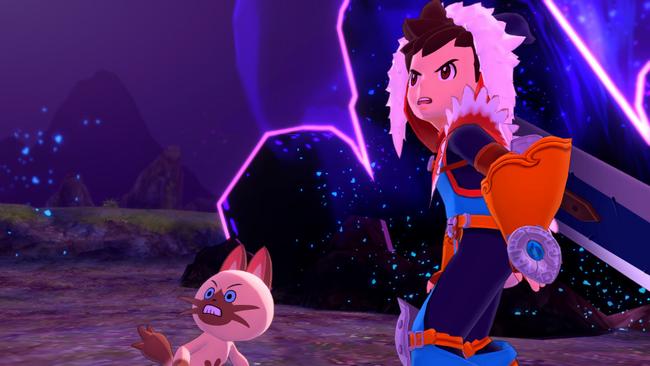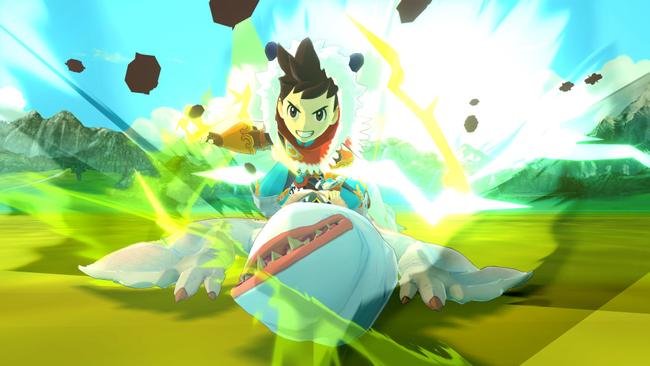Monster Hunter Stories Switch Review
If you can believe it, 2017 was a good year of solid 3DS releases. However, a lot of those 3DS titles were overshadowed by the release of the Switch, which completely left the 3DS in the dust. Games like Fire Emblem Echoes, Ever Oasis, and Miitopia were passed over in favour of Switch titles like Breath of the Wild, Xenoblade Chronicles 2, and Super Mario Odyssey. Another one of those 2017 3DS gems was Monster Hunter Stories. Releasing prior to Monster Hunter's mainstream hit Monster Hunter World, Monster Hunter Stories was a spin-off game that launched on a console that had just reached the end of its lifecycle. As a result, it received little fanfare from outside the niche Monster Hunter circle.
In the Monster Hunter world, there exist human tribes who choose to live peacefully alongside monsters rather than hunt them. These people are known as Riders, simply called that because they have tamed monsters, and the beasts allow the Rider to mount them. A calamity has befallen the world: a disease called the Black Blight has begun to spread causing monsters to go berserk and killing off native plant life. The Kinship Stones that Riders use to become attuned to their monsters is the only known way to cure the Black Blight. You, as the protagonist, must travel across the world and purify the Black Blight and the regions it has affected.
Monster Hunter Stories plays more like a traditional turn-based RPG, so I went into the game hoping for a bit more information on the Monster Hunter world. Usually, the only bits of lore that can be found in most Monster Hunter games come from in-game encyclopedias which list monsters, where they live, how they survive in the wild, and random bits of info gathered around town from other NPCs. The same thing goes for how humans live in this monster-infested world. However, I found Stories wasn't that big on lore, at least not until later in the game anyway. Like most Monster Hunter games, after the initial batch of quests, the game's story starts taking a backseat until later in the game. I was always hoping to get more nuggets of a story throughout the game, but all I got were sprinkles.

However, not having a fantastic story isn't too much of a problem for me. Monster Hunter games are all about the thrill of the expeditions: heading out into the wild to gather ingredients, hunting smaller monsters for useful combining materials, and chasing a big monster for the quest reward. In that way, Monster Hunter Stories keeps that same formula intact. This still feels very much like a Monster Hunter game. The action combat has simply been swapped out for turn-based battles. Stories was also the first Monster Hunter game to feature a way to quickly gather materials. If you're riding a Monstie (the name for tamed monsters), you can run past gathering points while pressing the Gather button to pickup materials quickly. This quality of life change would feature in every Monster Hunter game after it.
Monster Hunter Stories features a relatively simple battle system. You and your Monstie go up against 1-3 monsters. You can freely choose which monsters to attack, with the monsters' line-of-sight determining if you'll enter a Head-to-Head. Basic attacks include Power, Technical, and Speed. They use a rock-paper-scissors system to determine Head-to-Head attacks. Power beats Technical, Technical beats Speed, and Speed beats Power. Losing a Head-to-Head 3 times in a row will knock down whoever lost those Head-to-Heads. There are "neutral" skills that can be used to buff you or your Monstie, heal, or unleash a powerful attack. These skills require you to use points from your Kinship gauge, which are gained from winning Head-to-Heads, winning the tugs-of-war that occasionally happen between your Monstie and the enemy monster, and passive buildup. Once the gauge is full, you can mount your Monstie to begin your fight together. Winning Head-to-Heads while mounted will increase the level of your Kinship skill, which is a powerful super attack. Using a Kinship skill as a finisher is the desired outcome since the game will reward you with a higher score, which means more drops for you to pick up as your spoils.
Monster Hunter games are all about pattern recognition, and this trait carries into Stories. The Yian Kut-Ku for example, has a couple of distinct patterns. It can charge or launch fireballs from a distance, while in close combat, it will swing its tail to knock you away so it can get at a safe distance to launch fireballs or charge again. Its tail swing is a Technical move in Stories, so you can use Power moves to beat it on most occasions. If the Yian Kut-Ku gets angry, it will start using its famous pecking barrage attack which is a Speed attack, thereby changing its pattern. For regular Monster Hunter players, these patterns will be a fun callback to the main series.

Like other games in the series, there's plenty of customization for the player to tailor themselves to their own needs. Each weapon and armor set has its own unique model, so you can dress up your Rider however you like. Stories even features different versions of classic equipment since the Stories protagonist is a child, which can result in some pretty charming renditions of old standby outfits. As you advance through the game's areas, it's always fun to check in at the armorer to see what new weapons and armor you can create.
Stories does have some evident shortcomings. While the game now runs at a much higher framerate compared to the 3DS, it still does have the overall appearance of a game from that era. Thankfully, the artstyle offsets this a little, but it's pretty plain from the character models that this is an older title. I've also not been a fan of the animated cutscenes since I first saw them, since that more realistic artstyle combined with the mid-2010s anime faces just looks so wrong. There's no easy way to instantly return to town unless you use an item, and traversal in general is pretty slow until you get a Monstie that can fly you around. The strange camera acceleration when looking around is still in the game from the 3DS version, and it still feels a bit stiff to use the right analog stick. It really peeled back the years for me, since I felt like I was using my old New 3DS XL, and not in a good way.
One of the major selling points of Monster Hunter Stories' port is the new addition of voice acting. All Monster Hunter games before Monster Hunter World featured the Monster Hunter language, and even then it was sparingly used. While it doesn't have full voice acting, all of the major story cutscenes are now voiced in English or Japanese. The port has also added in some additional content that was unavailable on the original worldwide version of the game. New postgame battles were added, including the option to refight story battles, and new Riders to face off against from the Monster Hunter Stories anime. This is in addition to some quality of life changes and more customization options for your character.
Monster Hunter Stories is a decent RPG even for those unfamiliar with the series. If you're a Monster Hunter fan and you like traditional RPGs as well, Stories should be a must-have game. It's a charming title for those looking for some monster taming fun, and a simpler RPG to play in between some other big hitters. Consider checking it out the next time you're looking for a more relaxing RPG.